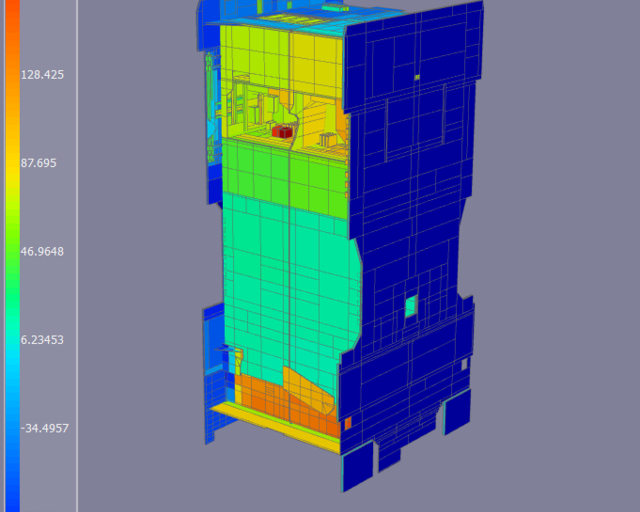Thermica and thermisol
Overview
Thermica is a thermal analysis tool that converts geometric models into mathematical representations to perform detailed simulations of space systems. It handles thermal modelling for spacecraft on planetary or interplanetary missions, computing factors like radiative and conductive couplings, solar and planetary fluxes, and thermal exchanges.
Thermica integrates advanced algorithms, including ray-tracing for radiative exchange factors, and supports detailed optical property management.
Thermisol, the solver paired with thermica, processes temperature calculations based on the detailed nodal descriptions and thermal inputs from thermica, enabling precise temperature predictions for complex space missions.

Main functions of thermica
Thermica
The main functions of thermica are as follows:
- Geometry modelling and physical properties & meshing
- Mission modelling: orbit & pointing
- Physical simulation: radiative & conductive couplings, solar & planet fluxes, convection
- Translation of the geometrical problem to a nodal network problem

Radiative exchange simulation in thermica
Thermica
Thermica features a module for calculating radiative exchange factors using a multi-threaded ray-tracing algorithm.
It evaluates various geometric and radiative factors to accurately simulate thermo-optical properties in UV and IR spectra. It handles absorptivity, emissivity, and the reflective and transmissive characteristics of materials. Thermica also allows for property adjustments based on the angle of incidence and defines wavelength-dependent characteristics.
Solar and planetary flux calculations
Thermica
Thermica accurately computes solar and planetary flux contributions to the thermal budget.
Solar fluxes are determined based on the Sun's position using a ray-tracing algorithm and thermo-optical properties. The Sun can be modelled as either at infinite or finite distance.
Planetary fluxes, including IR emissions and UV albedo, are derived from radiative exchange factors, with IR modelled as black body emission (uniform or non-uniform) and albedo defined by a variable coefficient.


Conduction effects modelling in thermica
Thermica
Thermica models conduction effects using two methods.
The simplified RCN method is a first-order approach that removes edges, simplifying node-to-node couplings for standard scenarios.
The RCN method, a second-order approach, uses a quadratic temperature profile within each node and integrates Fourier's law on edges to calculate conductive fluxes. This method, compatible with the finite volume approach, creates a new data structure for thermal nodes and edge interactions.
A powerful temperature solver: thermisol
Thermisol
Thermisol computes temperature solutions automatically set from the thermica following outputs: a nodal description, complementary items, couplings and fluxes, which combine in a detailed thermal model.
Thermal models can be easily enriched thanks to a very accessible thermal modelling language (Mortran) and a powerful user library. This allows them for a fast, robust and smart temperature solver that offers both steady-state and transient analysis.




